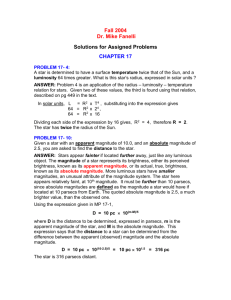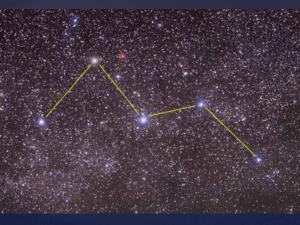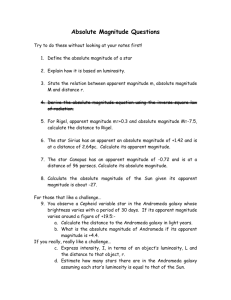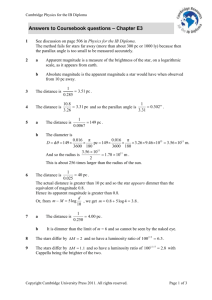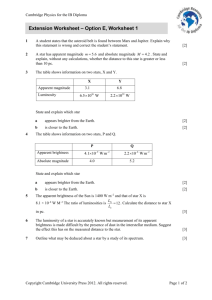Magnitude scale theory
advertisement
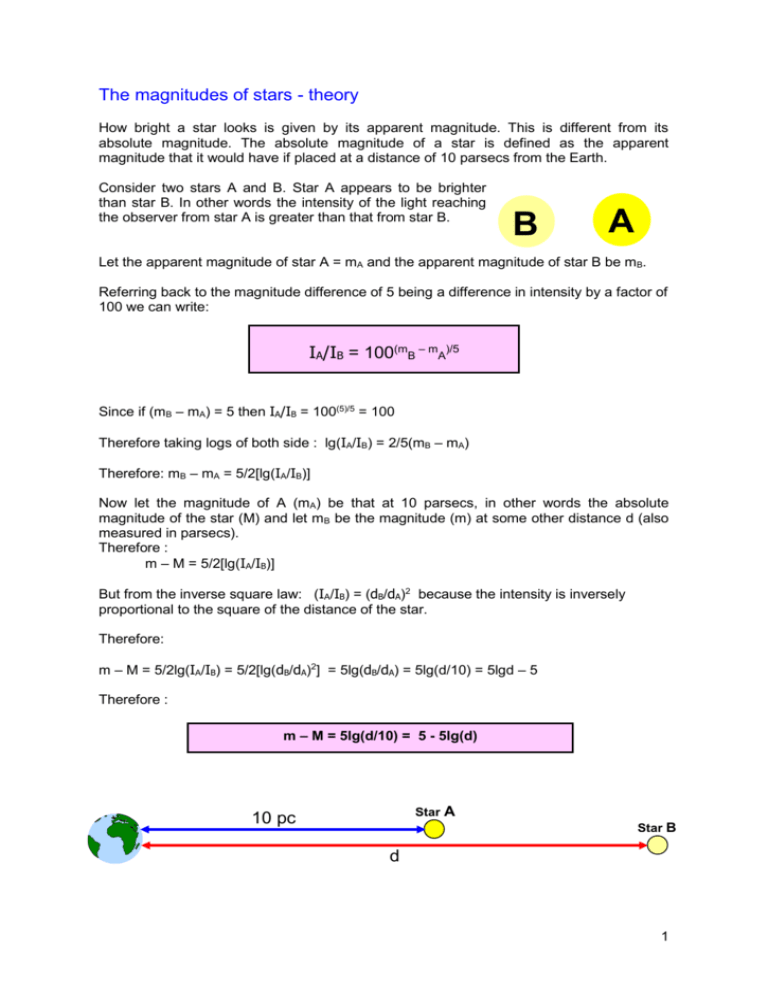
The magnitudes of stars - theory How bright a star looks is given by its apparent magnitude. This is different from its absolute magnitude. The absolute magnitude of a star is defined as the apparent magnitude that it would have if placed at a distance of 10 parsecs from the Earth. Consider two stars A and B. Star A appears to be brighter than star B. In other words the intensity of the light reaching the observer from star A is greater than that from star B. B A Let the apparent magnitude of star A = mA and the apparent magnitude of star B be mB. Referring back to the magnitude difference of 5 being a difference in intensity by a factor of 100 we can write: IA/IB = 100(mB – mA)/5 Since if (mB – mA) = 5 then IA/IB = 100(5)/5 = 100 Therefore taking logs of both side : lg(IA/IB) = 2/5(mB – mA) Therefore: mB – mA = 5/2[lg(IA/IB)] Now let the magnitude of A (mA) be that at 10 parsecs, in other words the absolute magnitude of the star (M) and let mB be the magnitude (m) at some other distance d (also measured in parsecs). Therefore : m – M = 5/2[lg(IA/IB)] But from the inverse square law: (IA/IB) = (dB/dA)2 because the intensity is inversely proportional to the square of the distance of the star. Therefore: m – M = 5/2lg(IA/IB) = 5/2[lg(dB/dA)2] = 5lg(dB/dA) = 5lg(d/10) = 5lgd – 5 Therefore : m – M = 5lg(d/10) = 5 - 5lg(d) Star A 10 pc Star B d 1 In our example if A appears to the observer to be brighter than B, and if we use m A to be the absolute magnitude (M) then its apparent magnitude (mB) is less and so its distance must be more than 10 pc. The apparent and absolute magnitudes of a number of stars are given in the following table. Object Sun Apparent magnitude -26.7 Absolute magnitude Distance (light years) Venus -4.4 Jupiter -2.2 Sirius -1.46 +1.4 8.7 Rigel 0.1 -7.0 880.0 Arcturus -0.1 -0.2 35.86 Proxima Centuari 10.7 15.1 4.2 Vega 0.0 +0.5 26.4 Betelguese 0.4 -5.9 586 Deneb ( Cygni) 1.3 -7.2 1630 Andromeda galaxy 5 -17.9 2 200 000 Our Galaxy - -18.0 - Example problems 1. Calculate the absolute magnitude of a star of apparent magnitude +2.5 which is at a distance of 25 pc from the Earth. M = m + 5 – 5lg(d) = 2.5 + 5 – 5lg(25) = 7.5 – 6.99 = +0.51 2. Calculate the distance of a star with an apparent magnitude of +6.0 and an absolute magnitude of +4.0. 6 – 4 + 5 = 5lg(d) Therefore: lg(d) = 0.6 d = 3.98 pc 3. Calculate the apparent magnitude of a star whose absolute magnitude is -1.8 if the star is at a distance of 35.5 parsecs from the Earth. m = M – 5 + 5lg(d) = -1.8 – 5 + 5x1.55 = + 0.95 2

